The History of DAOs
Let’s take a walk through the DAO history books to see where we’ve been and where we might be headed next.
Aragon

DAOs have come a long way since they were first conceived of in 2014. Since then, there have been tons of experiments, successes, failures, and learnings. All of these moments have been valuable, helping us learn how to build better organizations onchain.
Let’s take a walk through the DAO history books to see where we’ve been and where we might be headed next.
2014: It all started with an idea
Vitalik coined the phrase that would capture our attentions for years to come: “Decentralized autonomous organization.”
In a blog published on ethereum.org, he outlined the basic qualities of DAOs, DACs (decentralized autonomous corporations), and DAs (decentralized applications, now called dApps).
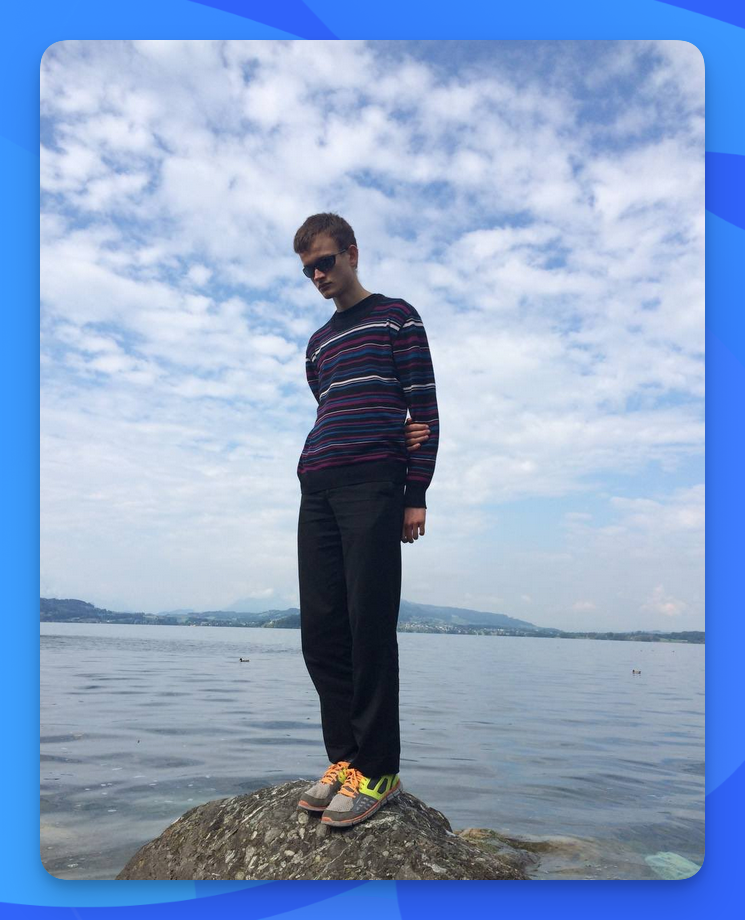
He specified that internal capital is one of the key differentiators between DAOs and other types of blockchain-enabled organizations. He wrote, “a DAO without internal capital is a DA and an organization without internal capital is a forum; the G8, for example, would qualify as a forum.”
One quote that stood out: "DAOs == automation at the center, humans at the edges."
We're still chasing that goal.
2015: A DAO to build a currency
MakerDAO launched even before the Ethereum network, and called itself a DAO before anything else. In 2015, founder Rune Christensen shared his thinking on “eDollar,” the first iteration of DAI, which would be built by a DAO.
Vitalik commented on the post to express his interest in the idea of apps with constitutions guaranteeing the slowness of feature changes.
Eight years later, MakerDAO and DAI are still here today.
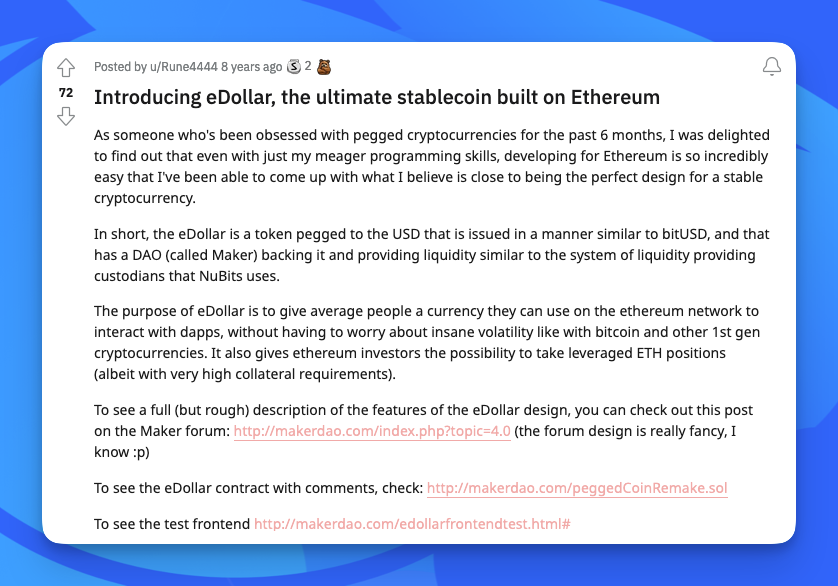
2016: The unfortunate fate of the DAO
One of the earliest DAOs, called “The DAO,” had a rather unfortunate conclusion. The DAO was hacked for about $6 billion, resulting in a hard fork of the Ethereum network. About 85% of miners transitioned to the forked version.
Many of the remaining miners continued mining on the original chain, which was renamed “Ethereum Classic.”
This early example of a DAO fork showed the importance of forking in DAO governance. Rather than disagreeing internally, DAOs can split into two or more groups, so that the smaller circles with the same viewpoint can more easily coordinate.
2016: Aragon was born
In late 2016, Luis Cuende and Jorge Izquierdo had an idea: create a DAO framework that makes it easy for anyone to experiment with governance at the speed of software. They wrote the whitepaper, built the concept, and released it to the world.
And thus, the Aragon project was born!
“The Aragon Network is an ecosystem where organizations, entrepreneurs, and investors can efficiently and securely transact without risk of technical bugs or malicious parties,” they wrote.
Early DAOs began experimenting on the Aragon stack, which was built with the goal of making organizations modular and customizable. Apps could be installed to your DAO and built by anyone. They also created templates that organizations could plug-and-play to launch on the blockchain quickly
2019: Moloch DAO was summoned
The interest in DAOs and governance experimentation continued to grow. In 2019, MolochDAO introduced the concept of rage quitting, which is when DAO members liquidate their governance tokens and take the equivalent assets with them. This preserved the right to exit and meant minority holders were protected.
DAOs began experimenting with the Moloch framework and the meme of Moloch grew more widespread.
Moloch is an ancient Canaanite god of child sacrifice that represents coordination failure. The founders explain the connection in the MolochDAO whitepaper:
“In ancient times, Carthaginians believed that sacrificing a child to Moloch in times of war would increase the odds of their tribe’s victory. Members that didn’t participate were seen as risking the survival of the entire group. This practice continued for years, despite [the] toll it it took, because of the power of the group’s incentive structure.. . . In this paper, we take Moloch to mean. . . the category of problems associated with collective action, where individual incentives are misaligned with globally optimal outcomes.”
2020: Compound makes moves
Compound, a DeFi yield protocol, launched their delegated governance framework and made it open to the world on OpenZeppelin. Proposals in Compound are onchain executable code rather than suggestions for a team to implement.
Rober Leshner wrote on Medium, “We’re proud to introduce a governance system that will replace the Compound protocol’s administrator with community governance — allowing you to suggest, debate, and implement changes to Compound — without relying on, or requiring, our team whatsoever.”
Compound is still revered as one of the most important innovations in DAO governance because they helped put the “A” in DAOs.
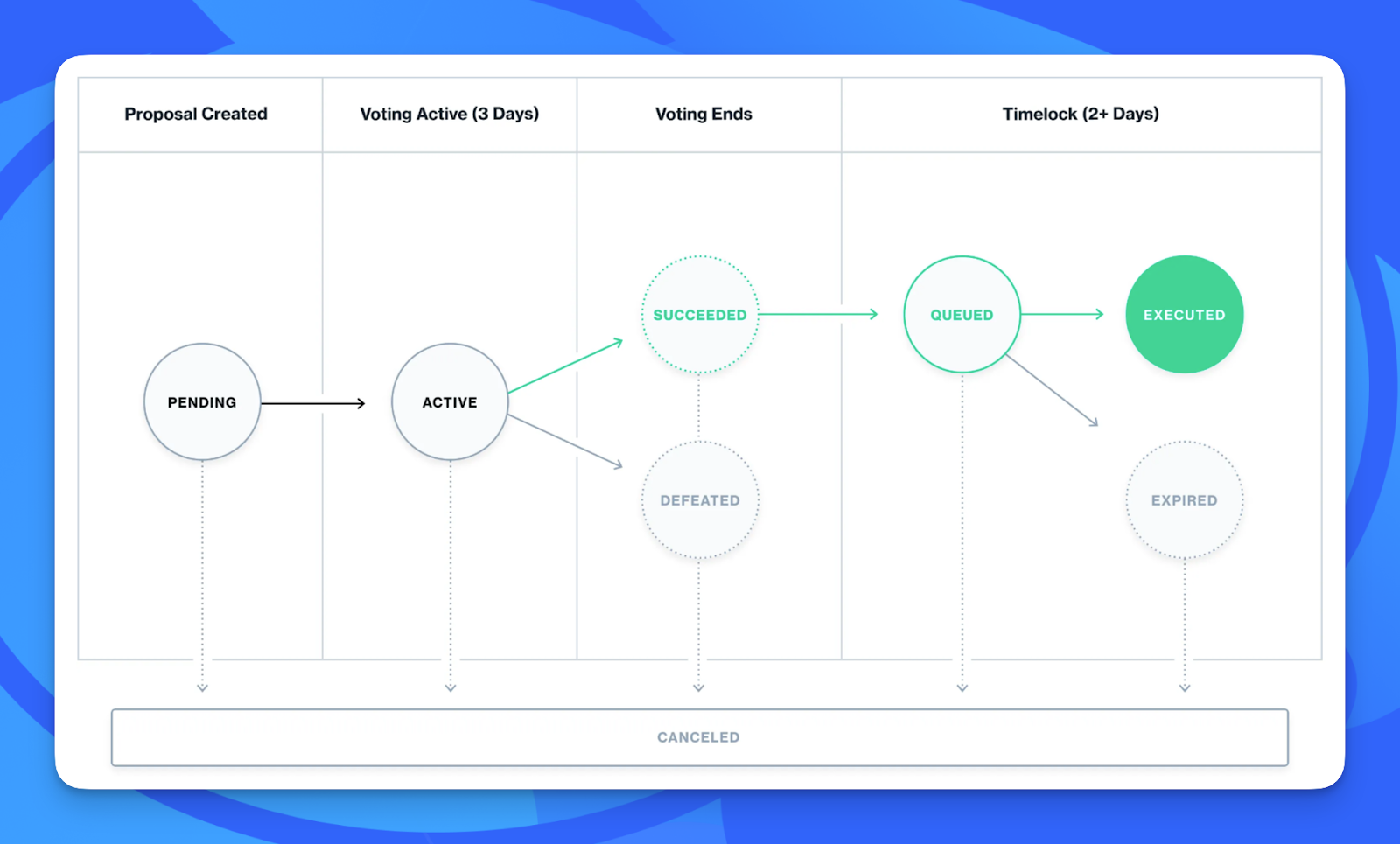
2020-22: Protocols DAO-ify
Follow the leader! With the bull market came more widespread interest in crypto and a clamoring for the decentralization of some of the most used protocols. Lido, ENS, Aavegotchi, and Sushiswap were a few protocols to launch tokens and transition into DAO structures.
Now, time came to see if a DAO could effectively and securely govern a protocol. DAOs had mixed success, with some successfully bringing together tons of active users and a thriving community, and others creating slow and cumbersome governance. Experiments were run and important things were learned. DAOs were innovating in real time!
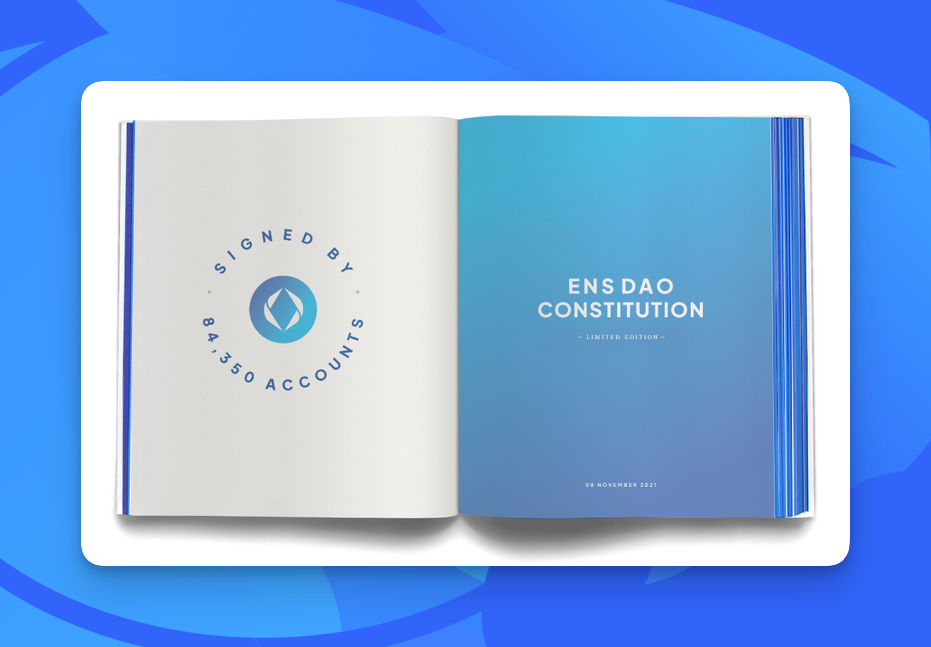
2021: DAOs make the news
The bull market also saw DAOs starting to make the news. Crowdfunding DAOs like Constitution DAO drew attention from mainstream media and the world started looking in to see what we were building. Hype was in the air and tons of new DAOs spun up with their own tokens.
The media found different and interesting ways to describe DAOs. The “chat room with a bank account” analogy popularized by the New York Times took hold, and some people started questioning whether DAOs were exciting innovation or pure anarchy.
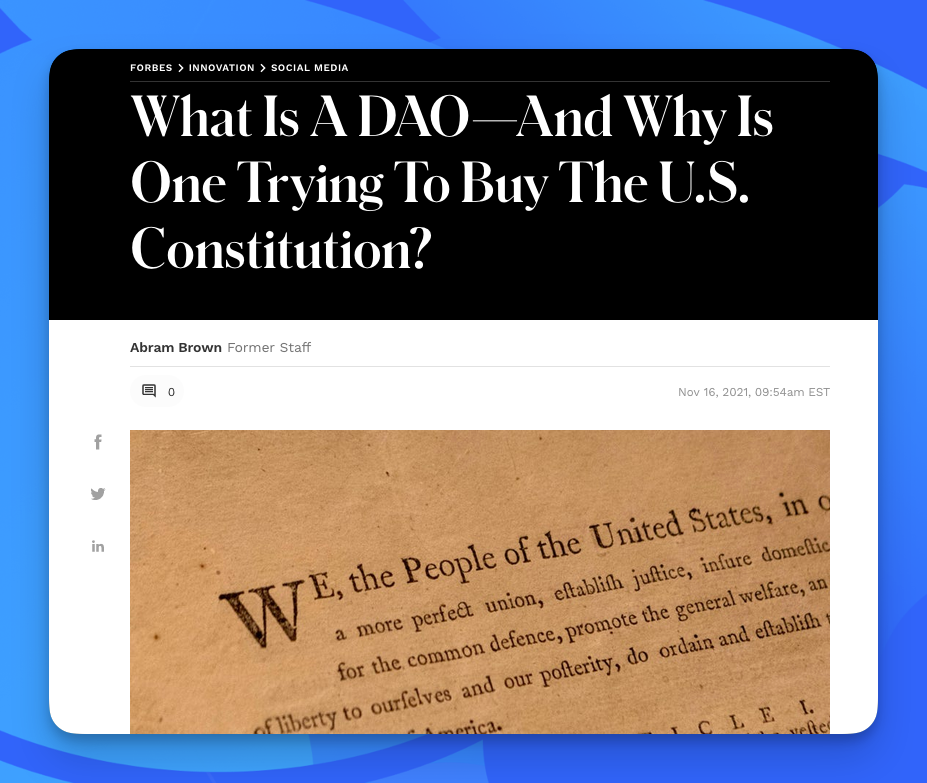
2021-22: Scaling off-chain
With the influx of DAOs and users came a spike in the cost of transacting onchain. So, DAOs found ways to scale off-chain, using tools like Snapshot voting paired with multisigs on Safe.
But DAOs quickly learned that it wasn’t just transactions that needed to scale. The social layer needed scaling, too. IRL events, from small meetups to massive conferences, grew in popularity.
We saw tons of DAO experiments in the bull market, from social DAOs with thousands of members spread around the world with ambitious missions, to small investment and collector DAOs flipping NFTs. Many DAOs faded away, but others blossomed into brands that are very powerful today.
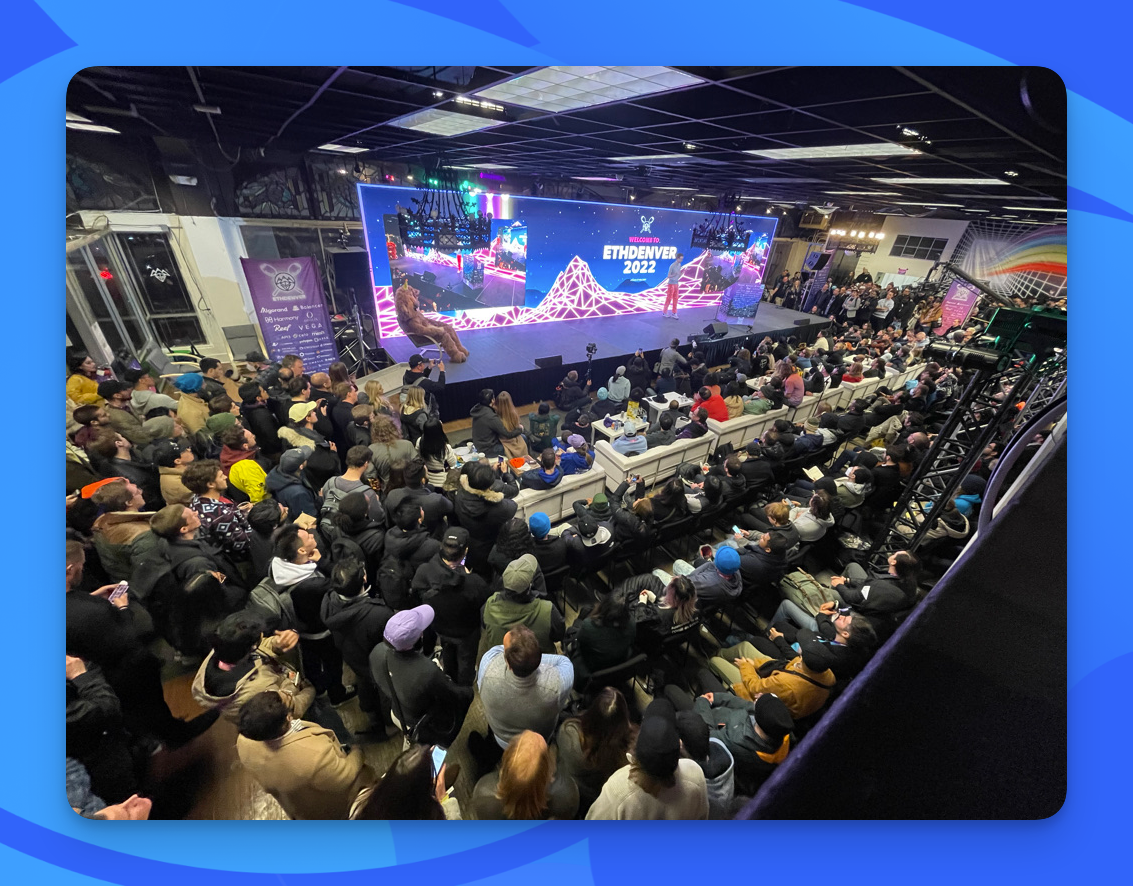
2022: New ways to govern
With a bear market comes less hype and fewer new entrants, so those who remain are here to build. And we’re seeing lots of building happening now! NounsDAO’s slow auction controls membership, jokeDAO’s game engine makes governance fun, and emerging permission management systems like Metropolis and Hats Protocol are showing that DAOs are looking for new ways to coordinate.
These emerging tools are creating more options for DAO builders and communities to choose from. We're still in the thick of experimentation, discovering what works and what doesn't. This has led us to create a tech stack for building DAOs that allows for experimentation and adaptability, so DAOs can truly experiment with governance at the speed of software.
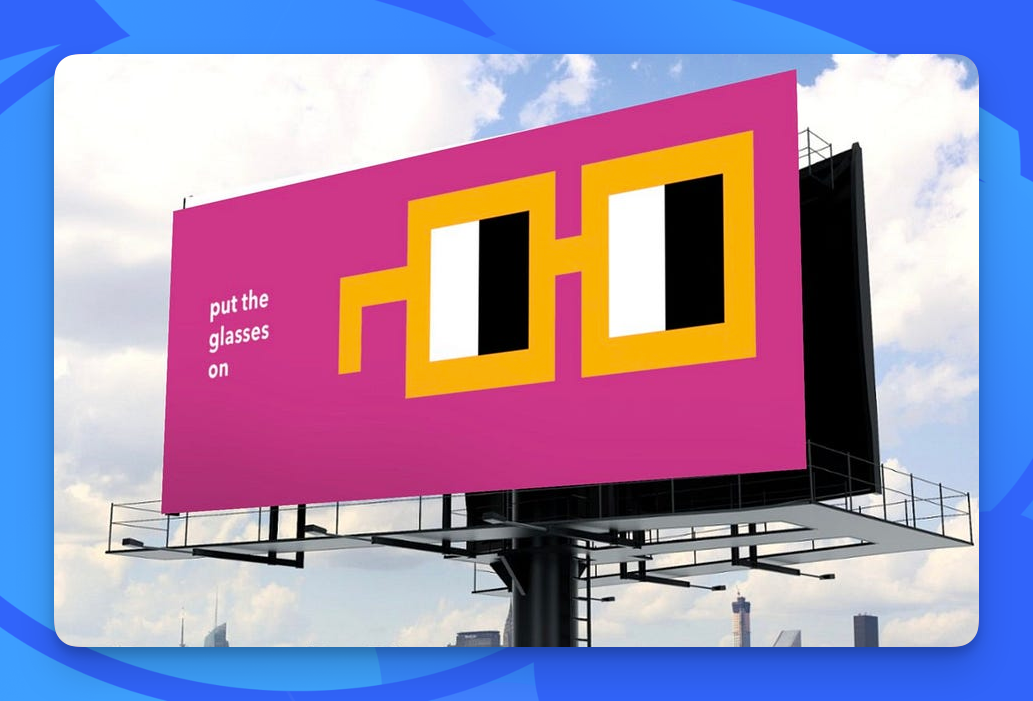
What have we learned?
Through all this DAO history, we've learned that DAOs need to evolve and grow over time rather than take a one-size-fits-all approach to governance. This has led us to creating a new adaptable, easy-to-use stack that anyone can build on top of and adapt their governance as they experiment and grow.
Read our next blog to see what we’ve learned and how we applied it to our new stack!
Be part of DAO history
Make your mark in the history books by launching your DAO onchain today! Use the Aragon App to build a DAO in less than ten minutes. Or, dive into the protocol and build a custom DAO using Aragon OSx. We can’t wait to see what you build!
Subscribe to The Eagle for weekly news on the Aragon Network
